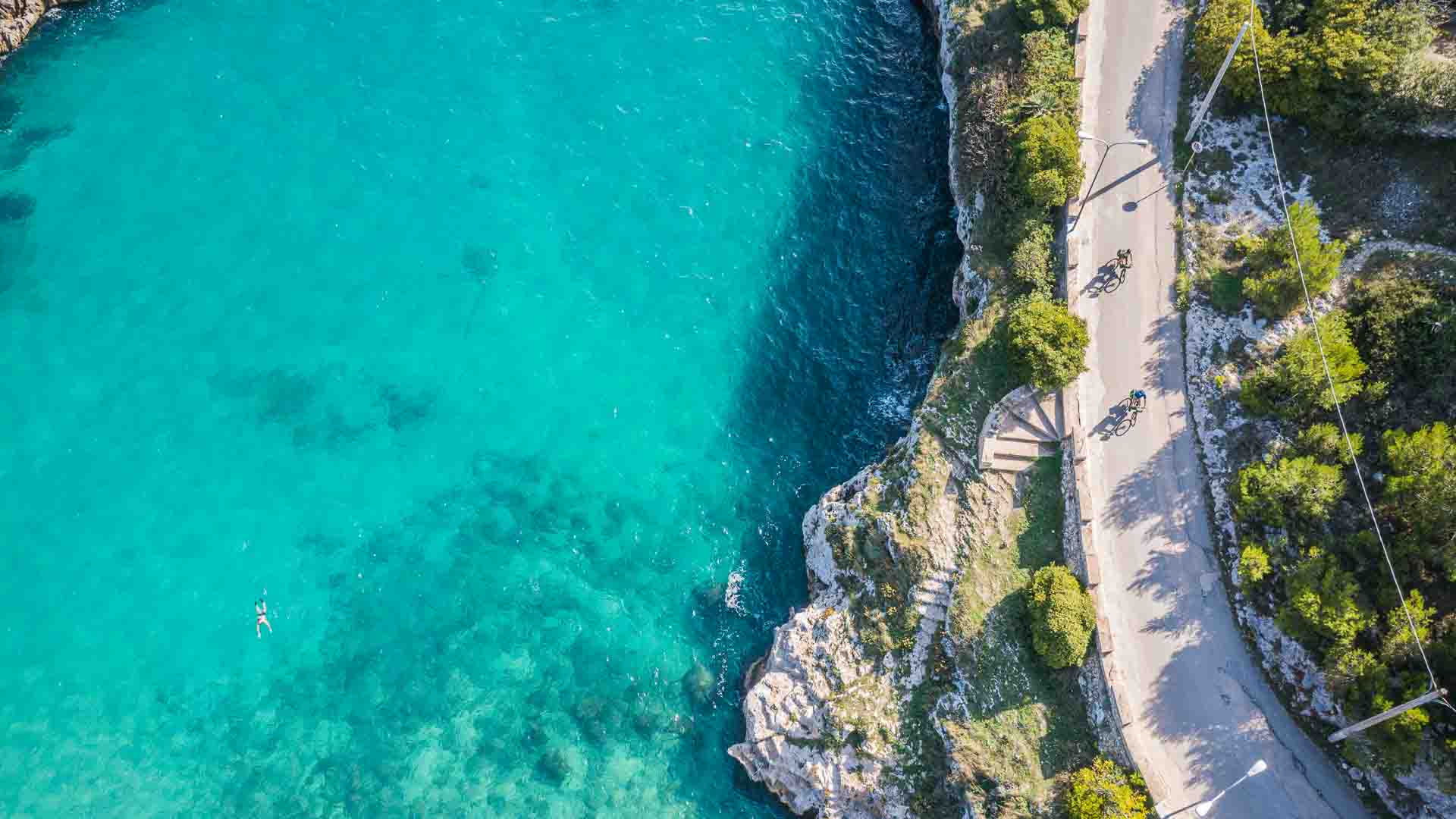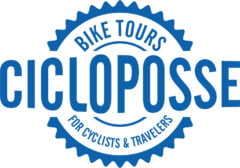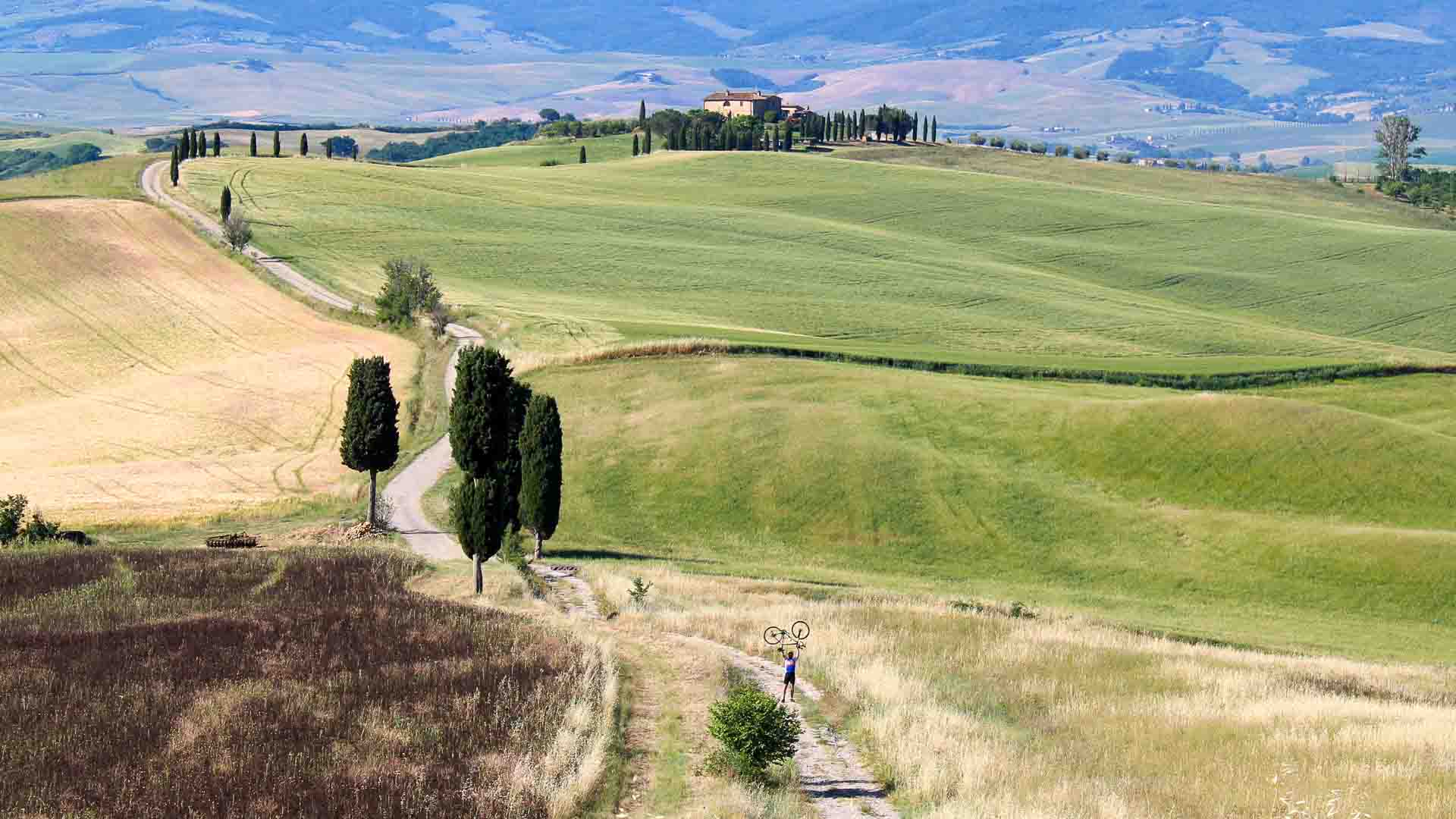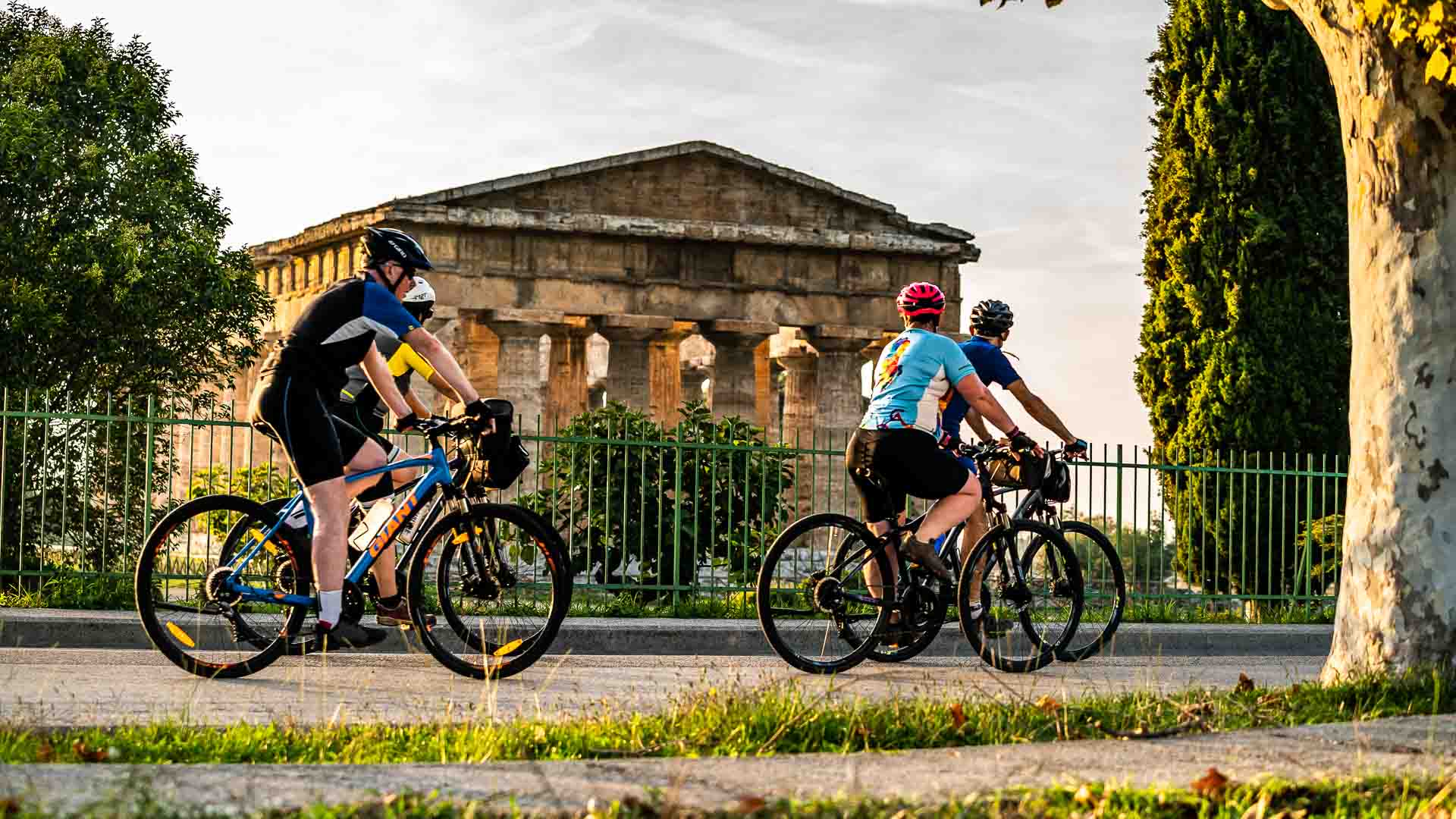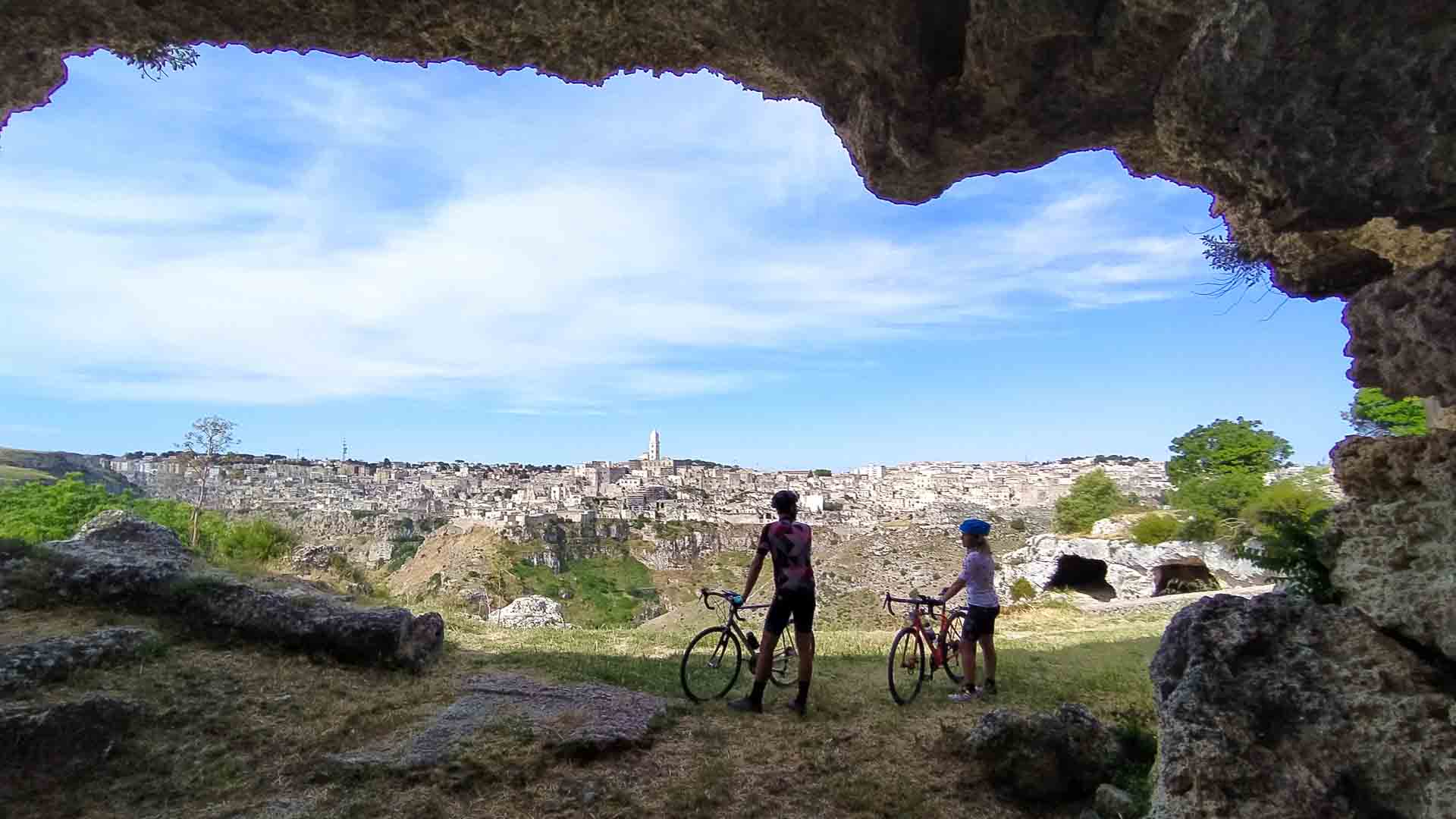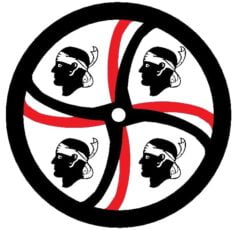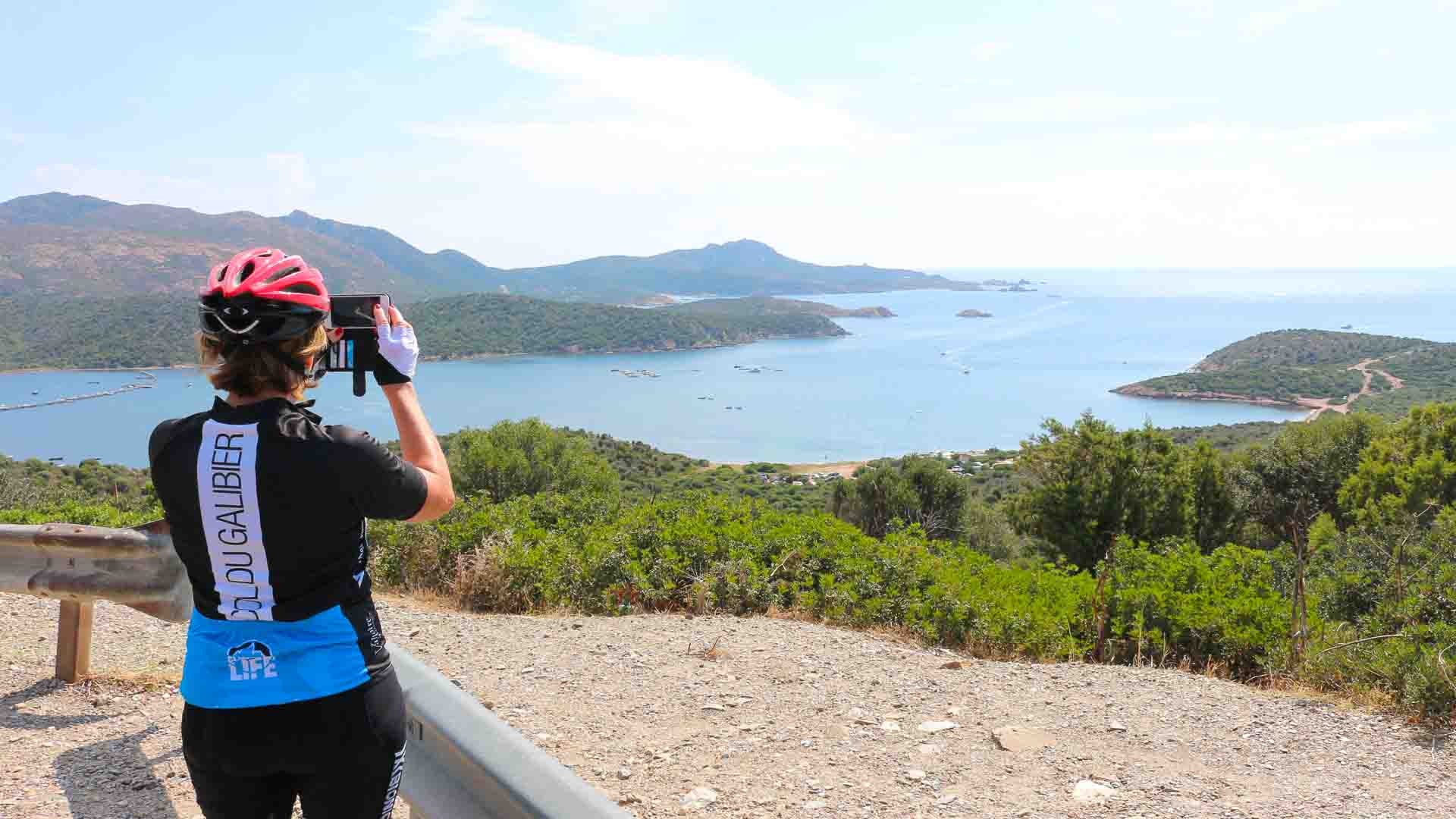A self-guided bike tour in Italy is the perfect way to discover one of the world’s most beautiful countries.
But where to start with booking one?! There are a lot of options out there.
In this article we try and cut through the noise. We share six of Italy’s most beautiful regions and share six tours to tantalise! These self-guided tours are all operated by local Italian companies. We haven’t been on their tours ourselves, but we’ve met the owners and are happy to say that they’re all cycling experts we would trust our own trip with. Plus, their reviews are great.
So read on and get inspired for your next self-guided cycling holiday to the culinary capital of the world!
This article includes details of services that we have used ourselves or which we would consider using. Some are paid adverts. Please read our disclosure policy for further information.
Part 1: Six of the best self-guided bike tours in Italy
Italy is a big place, so where should you start when planning a bike tour. In Part 2 below, we share some tips, including some questions to ask yourself when picking which region you want to ride in. Here, in Part 1, we start with the fun stuff – inspiration for the kind of unforgettable self-guided cycling trip in Italy that you’ll find yourself dreaming about for years after…
In case your knowledge of Italy’s regions is shakey, this map should help!
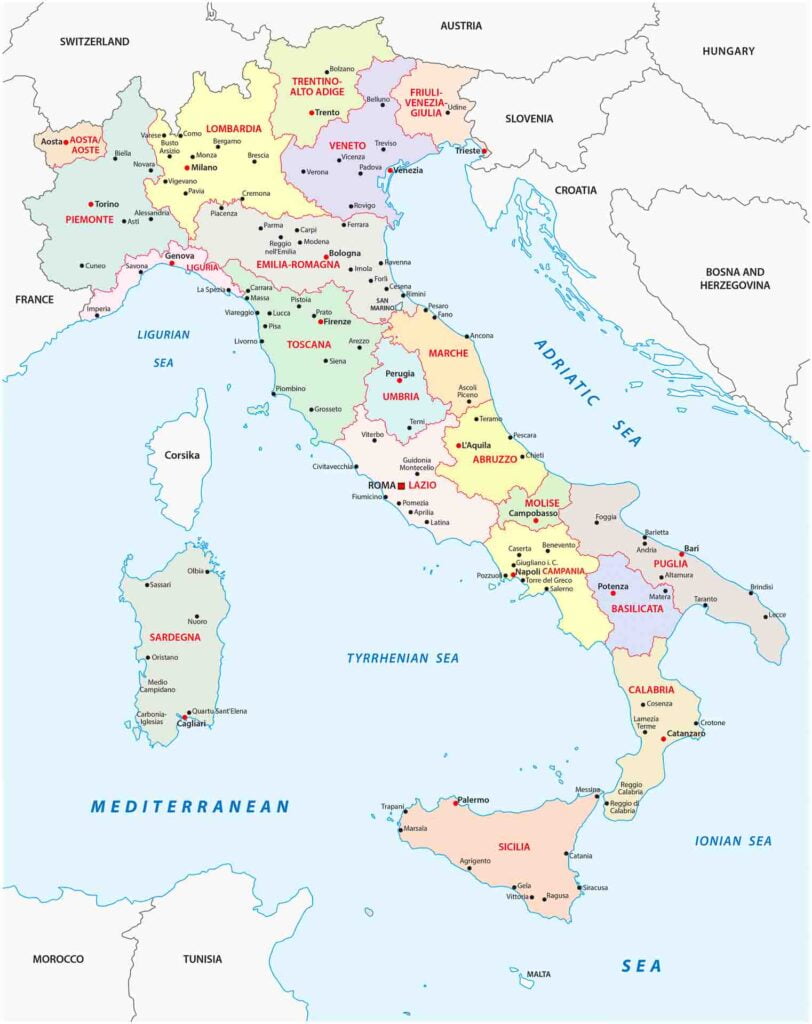
Veneto and Trentino
Tell us about your most popular self-guided trip?
Our most popular trip is our 8 day, 7 night ride between the Dolomites and Venice.
The route starts in Dobbiaco, in the heart of the Dolomites. The path follows the former Dolomites Railway through the valley of the ice cream makers manufacturers, through foothills and along quiet side roads along the River Sile towards the world-famous city of Venice.
Perfect for: Cyclists that love Italian culture, food and history; and those that want to experience some of the country’s most beautiful towns and cities.
Highlights:
- Views of the UNESCO protected peaks of the Dolomites National Park
- Ancient towns including Cortina d’Ampezzo, Bassano del Grappa, Asolo and Treviso.
- Venice makes a magnificent destination for your exploration of northern Italy.
Price: from €894 per person, which includes accommodation and luggage transport from one stage to the next. We are always happy to tailor our tours to your needs when we can. Inclusions/exclusions and more details here.
Why should cyclists travel with you?
Since 2003 FunActive Tours has offered unique cycling holidays for adventure lovers in Italy and further afield. Our focus is self-guided cycling tours, which offer freedom to ride at your own pace with the support of maps and GPS routes.
Even though you travel without a guide, you still have the chance to meet other people on the route. There’s no need to worry about accommodation: hotels are pre-booked for our customers and luggage transfer is guaranteed every day. Our customers can also count on the support of our friendly and knowledgeable staff all along the tour. A hotline service is available every day for any problem or question.
We are proud of our reviews.
Tell us more about your cycling tours
Self-guided only?
All our tours are self-guided.
Can guests pick the start date?
Our tours usually start on specific days of the week, however if you are a group of at least 5 people, it’s possible to choose a different start date.
What types of bikes do you offer?
We offer a broad selection of bikes, and we are happy to recommend the right type depending on the tour you would like to take. Touring bikes, e-bikes, E-MTB, mountain bikes, gravel and road bikes are all available.
The bikes we hire for our tours are equipped with a pannier bag, so you don’t have to carry a day bag on your shoulders.
Do you offer family bike tours?
Many of our tours are family-friendly: for those travelling with younger children, it’s possible to install child seats, and for older children we offer the option of installing kids’ trailer bikes.
What level of luxury do you offer?
The hotels we offer on our trips are usually 3 or 4 star hotels. Higher category hotels are also available upon request.
How can people find out more about you?
You can read more about the cycling tours we offer on our website: www.funactive.info
Emilia Romagna
Tell us about your most popular self-guided trip?
Our most popular trip is our 4 or 7 night “Taste of Italy: Emilia Romagna Culinary Cycling” self-guided trip which starts in Bologna and finishes in Parma. The route is on bike paths along rivers as well as disused railways and quiet country roads.
Perfect for: Cyclists who prefer shorter distances and mostly flat riding though there are some loop days into the lower hills.
Highlights:
- Tasting the excellent local food; world famous products like Parma Ham, Modena Balsamic Vinegar, Parmesan cheese and Sangiovese wines.
- Visiting parmesan cheese makers and balsamic vinegar makers to learn about these culinary arts.
- Discovering the UNESCO cities of art and medieval villages: Bologna and its porticos and alleyways, Modena, Reggio Emilia, Castelvetro, Bazzano, Torrechiara Castle.
Price: from €995 per person in double occupancy, for 4 nights/5 days. Inclusions/exclusions and more details here.
Why should cyclists travel with you?
Cycle Europe has been a pioneer of bicycle travel in Europe since 1972. We are based in Emilia-Romagna in Italy and are owned and operated by the second generation of the Price-Malpezzi family.
Our mission is to take care of the details for those who want to explore Europe by bicycle. We use our decades of experience, a vast network of local contacts, high quality equipment and exceptional cycling routes, to craft the memorable travel experiences you dream.
We are proud of our reviews.
Tell us more about your cycling tours
Self-guided only?
We offer both guided and self-guided tours. We also craft custom itineraries for private groups.
We can provide:
- all the extras, including bike and equipment rentals, route planning, ground operations and local guiding services;
- fully-equipped touring vans and an array of specialised bike touring equipment, along with a multilingual team
- immersive travel experiences for riders and non-riders, specialising in exclusive experiences and requests that only a local can design and support
Can guests pick the start date?
Self-guided: we suggest a best start day of the week, which allows you to experience best availability of included services, local visits and experiences.
Guided tour: we do not publish group calendar departure dates, instead, we try to put together single or small numbers of travellers interested in a guided tour. Normally a standard guided tour departure is confirmed with a minimum of six participants. Custom guided tours can start with any number of participants.
What types of bikes do you offer?
We have a large fleet of high-quality bikes, with more than 500 of any kind (titanium road and hybrid bikes; tandems; MTBs, kid’s bikes, E-bikes), with a bike style and fit for every type of cyclist, from novice to expert, and supported by the best mechanics. Our customers praise our personalised, highly flexible delivery and bike fitting services.
See our bikes here.
Do you offer family bike tours?
Yes, we can. We make families aware that our itineraries are mainly on low traffic secondary roads and bike paths.
What level of luxury do you offer?
We offer two tour styles – Classic and Casual. In Classic the level is mainly mid-range, in the Casual both basic and mid-range. Luxury can be accommodated by request. See more info on Classic vs Casual here.
How can people find out more about you?
Please check out our website: https://www.cycleeurope.com
Tuscany
Tell us about your most popular trip?
Our gravel self-guided tour is 7 days (6 nights). It starts in Pienza and ends in Gaiole in Chianti.
Perfect for: Cyclists that want to experience Tuscany’s famed Strade Bianche white gravel, cypress tree lined roads for themselves.
Highlights:
- Ride the undulating white gravel roads of Tuscany and immerse yourself in Italy’s most classic cycling region.
- Taste superb Tuscan wines from rom ancient cellars, such as Vino Nobile di Montepulciano to Brunello di Montalcino
- Ride part of the L’Eroica course Tuscany’s internationally recognised vintage bike race
Price: from €1,690 per person in double occupancy, for 6 nights/7 days. Inclusions/exclusions and more details here.
Tour can be tailored into different stages and distances.
Why should cyclists travel with you?
For the last 29 years, we’ve been creating special biking experiences that truly connect us to the places we explore. We don’t just offer trips; we create extraordinary adventures based on our own firsthand experiences.
We are based in Tuscany and so our Tuscan cycling holidays are particularly special. We are well-known for our cycling and cookery tours.
We love cycling and are dedicated to giving each rider a personalised experience. Being avid cyclists ourselves, we understand the importance of having the right bike for each tour. That’s why we provide a range of high-quality bikes suitable for different terrains and preferences, ensuring that every rider has the best experience possible.
We receive excellent reviews.
Tell us more about your cycling tours
Self-guided only?
We offer self-guided and guided tours. Our guided tours have a 12 person maximum.
Can guests pick the start date?
Guided tours have a fixed scheduled date, which you can find here.
Self-guided tours are on request and clients choose the start date.
What types of bikes do you offer?
We have many type of bikes: road, gravel e-bike and hybrid.
Do you offer family bike tours?
Due to the terrain, we do not suggest biking here with kids younger than 12 or 13.
What level of luxury do you offer?
We focus on mid–range to luxury hotels.
How can people find out more about you?
To find out more about our Tuscany trips, please read here.
To find out more about our self-guided cycling trips, please read here.
Campania
Tell us about your most popular self-guided trip?
This 8-night tour starts in Paestum and ends in Marina di Camerota, just south of Salerno and Naples on the same stretch of coastline as the famous Amalfi coast.
Perfect for: Cyclists that love coastal views, sea swimming, Greek and Roman history and anyone who wants to experience untouched rural Italy.
Highlights:
- Visit the National Park of Cilento, the second biggest natural area in Italy, recognised by UNESCO as a World Heritage Site of Humanity.
- Archaeological site of Paestum dating back to 6th century
- The area is Cradle of the Mediterranean diet and highlights include sampling mozzarella since Paestum is the birthplace of the buffalo mozzarella
Price: from € 820 per person in double occupancy, for 8 nights/9 days. Inclusions/exclusions and more details here. Tour can be shortened to 5 nights or combined with other tours, such as our Amalfi coast cycling tour, to make it longer.
Why should cyclists travel with you?
Genius Loci Travel was founded in 2001, more than 20 years ago. It was founded by two of us, a Dutch man with a vision to promote more sustainable travel designed to benefit local communities, and an Italian woman with a dream to be live and work in southern Italy rather than be forced to leave to find work.
We started offering walking and cycling holidays from our base in Salerno at a time when almost no one in the area offered these.
Before starting to organise tours, we had worked/volunteered in nature conservation, land use planning, rural development and environmental protection. This commitment to nature and environment is tangible in most of our tours and the way we organise logistics and operations.
Today, we are a larger team, passionate and enthusiast to contribute to local communities’ development, and make sure your guests see the gems hidden off the beaten tracks. destinations.
You can find reviews from our clients, here.
Tell us more about your cycling tours
Self-guided only?
We offer both but mainly self-guided tours.
Can guests pick the start date?
On our self guided tours, during the months of [Please confirm] our guests can choose any day of the week to start their trip.
What types of bikes do you offer?
We can supply road, gravel, leisure and e-bikes. [Please can you provide a little more information about your fleet. For example how many bikes you have, whether they’re metal/carbon etc]
Do you offer family bike tours?
No we don’t. [Is there a reason for this? It might be nice to explain why.]
What level of luxury do you offer?
Mostly 3-4 star family run properties, reconverted farms, agriturismos and (when available) boutique hotels.
How can people find out more about you?
Please check out our website: www.genius-loci.it
Basilicata and Puglia
Tell us about your most popular self-guided trip?
Typically, one of our tours might last 7 to 10 nights and start in Matera, Basilicata, known for its ancient cave dwellings, and end in Lecce, Puglia, famed for its Baroque architecture.
Perfect for: Cyclists wishing to experience the diverse landscapes and cultural highlights of Basilicata and Puglia.
Highlights:
- Exploring the UNESCO World Heritage site of Matera.
- Cycling through the Itria Valley, visiting the historic towns of Alberobello (famous for its trulli and its distinctive white-washed conical-roofed houses), Ostuni (the ‘White City’), and Lecce (the ‘Florence of the South’).
- Enjoying the coastal views along the Adriatic Sea and tasting regional specialties and wines.
Price: from €625 (bikepacking) to €1,780 (comfort guided tour). Prices depend on the level of accommodation, included meals, guide services, and bike rental options. Inclusions/exclusions and more details here.
Why should cyclists travel with you?
Bike Basilicata is a brand of Ferula Viaggi, founded in 2002 and specialising in active holidays in Basilicata and Puglia in the southeast of Italy, where we are based.
We offer a deep local knowledge of the best routes, hidden gems, and must-see spots that general or larger competitors might not be aware of. We can also offer cultural experiences such as local artisans, meals at family-run restaurants off the beaten path, and accommodation that reflects the local heritage.
Our tours are flexible, as we have more than 200 daily itineraries of varying levels which we can combine. We also create custom itineraries.
Clients tell us they like our high-quality support service, bike rental (we have more than 200 bikes), knowledgeable guides, support vehicles, and logistical assistance for a seamless experience.
We are pleased to share our reviews.
Tell us more about your cycling tours
Self-guided only?
We offer self-guided and guided
Can guests pick the start date?
Yes, you can choose your start day
What types of bikes do you offer?
We offer tours for road, gravel, leisure and e-bike.
Do you offer family bike tours?
Yes, we are happy to accommodate family bike tours
What level of luxury do you offer?
Usually we offer two levels of accommodations: a casual (basic) and a comfort (mid-range). We can also offer luxury self-guided cycling tours on request
How can people find out more about you?
Please check out our website: www.bikebasilicata.it
Sardinia
Tell us about your most popular self-guided trip?
Our most popular self-guided cycling holiday is our 7 day “Medieval Towns and Roman Ruins” tour. It begins in Alghero and ends in Oristano. The terrain is hilly and we offer two route options each day. The tour covers a total distance of 160-190 miles. We can make the routes longer and can also offer fewer nights or additional nights as well as cooking classes, cheese tasting and more.
Perfect for: Cyclists wanting to discover Sardinia all year around (except January and February).
Highlights:
- The beautiful Catalan city of Alghero and open-air museum of Tharros
- Cycling on the Sinis Peninsula
- San Salvatore village, “Spaghetti Western” movie location
Price: from 1,480€ per person in double occupancy. Inclusions/exclusions and more details here.
Why should cyclists travel with you?
We are a cycling tour company, a tour operator and bike rental shop. Cyclists travel with us for our knowledge of the area and because we can customise and help with many types of request, from luxury hotels to boat trips. We provide personalised and attentive support.
Above all, cyclists love how we help them find the best cycling routes for their needs.
We are proud of our reviews.
Tell us more about your cycling tours
Self-guided only?
We offer both self guided and guided cycling tours in Sardinia, with options for both road and gravel-based holidays.
Can guests pick the start date?
Yes, the clients can choose the start date.
What types of bikes do you offer?
We rent carbon frame road, touring and gravel bikes (Scott and Vektor brands) for avid or leisure cyclists. We also rent e-bikes for all sizes (Scott brand).
Do you offer family bike tours?
We are happy to accommodate families looking for customised trips.
What level of luxury do you offer?
Superior and luxury
How can people find out more about you?
Please check out our website: https://www.biketoursardinia.com/
Part 2: Practical things to know about self-guided bike tours in Italy
Is a self-guided bike tour for you?
If you’re interested in an Italian cycling vacation but find guided tours too expensive and going alone too risky, you might consider a self-guided tour.
Self-guided cycling holidays can generally be selected from a menu of tours that the company offers. These come with pre-planned routes and designated hotel stops. The tour company will handle booking your hotels and transferring your luggage between hotels. They can also arrange bike hire for you if you need it.
You will receive a detailed packet at the outset, containing daily route maps, usually in digital format but many companies can also provide physical copies for the old-school cyclists out there. These maps include clear turn-by-turn instructions, elevation profiles, and overall maps. Additionally, you can request GPX digital files for each day’s route if you prefer using a Garmin for navigation.
With the right operator, the routes will be well-thought out and designed to take in the best of the region. Guiliana from Cicloposse says, “opting for a local Italian operator on a bike tour in Italy ensures you get an authentic experience that makes it easy to discover hidden gems.”
Things to love about a self-guided bike tour
- All the admin hassle of hotel bookings and luggage transfer is dealt by someone else. You can also save time on route planning – which is particularly handy in Italy. Valeria from Genius Loci Travel points, out, “In Italy, unlike other European countries, there aren’t many specific signposted routes, which means route planning can be tricky.
- There’s usually much more flexibility with start dates and some companies will even tailor the routes to your requirements, for example providing extensions or shortcuts depending on how long you want to ride each day.
- You don’t need to wait for the group; you can ride to your speed and stop when you want
- If you have a problem, companies usually offer 24/7 telephone support.
- If you pick a local company, you can get the local’s experience. Anna from BikesPlus/Cycle Europe says “We know the area and the country, we personally test the services (including hotels, restaurants and experiences), and we create the best possible cycling routes and travel experience, as only a local can do.” Mauro from Bike Tour Sardinia echoes this. He says “We can organise meeting the centenarians or the shepherds, have a dinner with them at their houses or other truly memorable local experiences.”
- And finally, Michele from Bike Basilicata makes the point that “By choosing a local operator, you’re supporting the local economy and encouraging sustainable tourism practices. It’s a way to ensure your travel has a positive impact on the regions you visit.”
Key things to be aware of
- You won’t have a guide on hand, so you’ll need to be happy following a GPS route yourself and will be self-sufficient for sourcing meals and coffee stops. Normally, however, if you want suggestions, your tour company can share some favourite restaurants and coffee shops with you.
- You won’t have a support van accompanying you. This means that it’s up to you to reach the next hotel each day, regardless of whether you encounter unfavourable weather or run out of energy/inclination to ride. That said, self-guided tour companies will provide an emergency hotline, and in this case the tour company will assist you as much as they can. For example if you encounter bad weather or run out of energy, they may be able to suggest public transportation or organise a private taxi to pick you up.
- You’ll be expected to be able to do basic bike maintenance such as changing punctures.
- Self-guided tours usually have a minimum of just two travellers. This means that you probably won’t be riding in a group. So self-guided tours are great if you like independence and freedom but not so good if you’re looking for group comradery.
Planning your self-guided bike tour in Italy
Select the right region for you
Italy is a beautiful country full of stunning regions and fantastic food, but you’re going to need to select a particular region to visit. Here are some questions that should help you narrow down the choices.
- What kind of terrain are you looking for? Flat and gentle or hilly and mountainous?
- Do you prefer beautiful coastline and coastal towns or immersing yourself in the mountains?
- Are you a food enthusiast looking to visit a pasta region or do you want to explore a wine region?
- Are you looking to experience culture and history?
- Are natural landscapes your priority or do you prefer urban life?
- Are you after charming villages, picturesque towns or vibrant cities?
- What level of accommodation do you like? Family-run B&Bs, boutique hotels or luxury hotels?
Best time to visit for cycling holidays in Italy
It’s very possible to cycle somewhere in Italy at any time of year. However, the best time to visit Italy is during spring and autumn. During these seasons, the temperatures are normally not too hot or too cold, the scenery is vibrant and (with a bit of luck) the weather should be ideal for cycling.
Spring
In spring, many parts of the country start to warm up, ranging from around 15°C to 23°C . It’s still probably not short sleeves weather until at least late April. Around Easter, Italy gets busier, and prices increase. Be aware that in the high mountains in the north of Italy, many passes will still be covered by snow; often until mid-June. By that time though, much of the south will be gloriously warm.
Summer
During the summer months, particularly July and August, temperatures are high, usually around 27°C, but often reaching over 31°C during the hottest part of the day. Visitor numbers are at their peak during this time and it’s worth noting that many Italians take the entire month of August off work. As a result, many businesses close, making the cities quieter.
Autumn
Autumn brings a gradual cool down in temperatures. September is very pleasant (and popular!), with average temperatures around 25°C. October is also still popular in most parts of the country. You can expect autumnal colours and some sunny days, but also be prepared for wet weather. Towards the end of October, the season ends in many parts of the country, so be aware you may encounter closures.
Winter
In winter, the temperatures in the south of Italy usually stay mild. However, northern Italy is typically wet and cold. Many of the mountain passes become blocked by snow and are best avoided.
Choose the duration of your trip
Those looking for a beginner cycling tour often start out with a cycling holiday that’s just a few days of cycling; perhaps 3-4 days. When you aren’t used to multiple days in the saddle, it’s a great idea to start out with this kind of length.
Once you’ve been bitten by the cycling bug, have done a weekend cycling trip and are eagerly planning your next cycling holiday, it’s time to look for something a bit longer. 7 day cycling holidays are probably the most popular length trips.
From there, the world is your oyster and many tour companies happily cater for 10 day, 14 day and even longer cycling tours and holidays throughout Italy.
If you’re looking for a group departure, you then need to find a company with dates to match. Or an operator that offers private departures.
Consider your fitness level and experience
When considering the length of your cycling tour and region you’re going to ride in, it’s important to also consider your fitness level.
Italy’s terrain varies enormously, from huge mountains to rolling hills, hilltop villages, dramatic coastline and easy-going riverside cycle routes. Your legs and lungs need to be up to the challenge if you’re going to take on the more vertical of these options!
During a guided bike tour, you can join the support van or shorten the ride, but on a self-guided bike tour this is usually not possible. To prepare, it’s a good idea to try riding on consecutive days and practice on the same type of bike you’ll be using during the tour. There are significant differences between riding mountain bikes, road bikes, and hybrid bikes.
Bear in mind the average distance and elevation gain you’ll encounter on the tour itinerary, and make sure to experience riding a similar distance before joining the tour.
Research cycling routes and itineraries
One of the great things about asking a local Italian company to plan your cycling holiday is that they are the experts on the routes in their area. They know them like the back of their hand and so can suggest routes that fit what you’re looking to achieve from your trip. Elisabetta from FunActive says “on a self-guided tour, we ensure you’re riding the best routes and getting the most exciting travel experience.”
If you are looking for a DIY tour in Italy, then it’s time to block out some time and dig into the detail in order to avoid the crowded towns and find the quiet roads and beautiful points of interest along your route. There are lots of route planning sites out there and we always suggest checking resources like Google Street View too. You can find more tips here.
You’ll also need to think about whether you’re going to carry your own luggage or arranging luggage transport.
Highway code and travel information
As ever, it’s a good idea to check current travel information before you book and travel. For UK visitors, the UK government travel information pages for Italy are here. You should also read and follow Italy’s highway code.
Tips for going on a self-guided tour in Italy
We asked our panel of Italy cycling experts for their top tips for planning a cycling holiday in Italy. Here’s what they said
- Elisabetta from FunActive: “It’s not all about the riding; don’t forget to make time for cultural stops and time to enjoy the food and wine!”
- Guiliana from Cicloposse: “Our top tip for anyone considering a bike tour is to thoroughly assess the difficulty level offered by the company and inquire about the specifics of the bikes provided. A crucial aspect of any bike tour is having access to high-quality bikes equipped with all the necessary gear. It’s essential to evaluate the company based on the information they provide about bike specifications and equipment. By doing this, you can ensure you pick a holiday that gives you an enjoyable and comfortable biking experience throughout your tour.”
- Anna from BikesPlus/Cycle Europe: “Search for less popular destinations for your Italy bike tour; you’ll be surprised by the marvellous treasures you’ll discover.”
- Valeria from Genius Loci Travel: “Find out where your operator is based before booking your trip. Are they based in the country themselves or are they reselling someone else’s trip? Because we live in the area and operator our own trips, our guests get the best experiences and can feel they are looked after every single day of their journey.”
- Mauro from Bike Tour Sardinia: “Have a look at the hotels, not considering just the stars but whether it’s family run and whether it offers something special.”
And finally!
We hope you have a wonderful time riding in Italy. In the comments below, do share your tips for cycling trips in Italy – and also if you’ve travelled with any of the operators mentioned above.
Please support Epic Road Rides
A huge amount of time and effort goes into the article you’ve just read, all with the aim of helping you!
If you found what you’ve read useful, I’d really appreciate it if you dropped something in the tip jar here.
It’s a way you can say thank you and help us carry on creating top quality content with no annoying ads and no pay wall.
Looking for an organised cycling trip?
If you want someone to help you plan and book your cycling holiday, fill out this form. We aren’t a tour operator/agent but we work with lots of people who are and will do our best to put you in touch with someone that can help (within 24 hours wherever possible)!
The contents of this website are provided for general information purposes only. It is not intended to amount to advice and you should not rely on it. You should carry out your own due diligence and risk assessments and take professional advice. Views expressed by interviewees or other users of this website do not necessarily represent our views. We make no representations, warranties or guarantees, whether express or implied, that the content on our website is accurate, complete or up to date. If you use any information or content on this website, download from, or otherwise obtain content or services through our website, it is entirely at your own discretion and risk. Epic Road Rides Ltd disclaims all liability and responsibility arising from any reliance placed on the information and content on this website. Find out more here.


